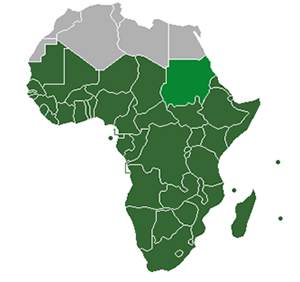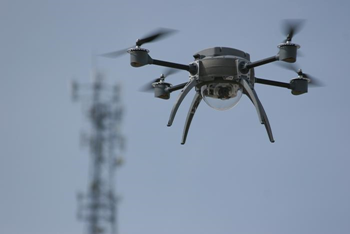InTrans / Feb 20, 2015
‘Drone’ on: The next cell phone?
Go! Magazine
 posted on February 20, 2015
posted on February 20, 2015
In the last article of this series, you learned what drones are in “’Drone’ on: the rise of the unmanned aircraft” and some applications for which they can be used. In this article, we are going to explore how drones can be used for disaster relief purposes.
According to a 2011 report from the International Telecommunications Union, 79 percent of people in developing nations have a mobile phone. In a place like Sub-Saharan Africa where 85 percent of their roads cannot be used during the rainy season (which typically lasts one or more months), this ability to telecommunicate is helping improve the quality of life in these communities.

Cell phones have been considered a technology able to “skip over” the need for infrastructure as a first step for implementing new technology. While infrastructure is still needed, cell phones may be a way to bridge the gap between when road construction begins and when it is completed. Africa skipped the landline phase, which requires costly infrastructure, and has gone straight to mobile technology. This has increased economic growth in the country drastically by giving people access to their bank accounts and other information from their phones.
Like all things, cell phones are not the “magic bullet” to fixing all the developing world’s problems. For instance, cell phones need electricity, which can be costly. Electricity is not always readily available, and often people must walk miles to get to the nearest charging station. Charging your cell phone costs about $0.25 every time, which comes out to $91 a year if you charge your phone once a day. And when over one billion people live on less than $1.00 per day, and 2.7 billion on less than $2.00 per day, affordability is critical for new technologies in developing countries.
Drones traversing the land
Another example of technology that is advancing without roads, bridges, or other infrastructure are drones. One company, Matternet, is coming up with ways of implementing unmanned aerial vehicles (UAVs), or drones, to help get vital medicines, vaccines, and more to people where traveling by road may be too slow (or impossible if flooded) and air travel is too costly.
In a place like Sub-Saharan Africa where 70 percent of all people (24.7 million) live with human immunodeficiency virus (HIV), technology to deliver medicine could save many lives!
Matternet has proposed using several drones, which each cost about $5,000, to help deliver lightweight items (such as medicines and vaccines) to people in need. Each drone can carry up to 4.4 pounds for about 6 miles before it needs recharging. Matternet has proposed building a set of towers for landing the drones and either recharging or picking up materials to take to people. These drones would run autonomously, based on a global positioning system (GPS). Soon there will be the capability for their cell phones to even “call” a drone to request medicines!

Though these drones are somewhat costly to purchase (around $3,000-$5,000), it is estimated that to travel 6 miles with 4.4 pounds of goods in 15 minutes, it would only cost $0.24. This includes the cost of energy to travel, which would only be $0.02!
Disaster Relief
Matternet conducted their first trials using these drones after the devastating earthquake Goudougoudou (named after the sound of buildings when the earthquake shook everything on the surface), and soon after, tsunami, struck Haiti in 2010. These dual natural disasters took the lives of over 160,000 people. But not only did the drones help to deliver medicine, but they also took images to create a map of the affected area. This helped the relief effort immensely by focusing on the areas most effected.
No “magic bullet”
As mentioned before, there is no “magic bullet” when it comes to solving issues in developing nations. Technology alone will not help alleviate people from poverty.
But drones are a way to help with emergencies by capturing aerial photos of normally inaccessible areas, and by implementing new routes to deliver medicines and help in case of emergencies.
But have you ever seen a drone before? It looks a little scary, right? Because of the way drones “look” along with a lack of trust in the government, and personal views on privacy, many people feel that drones are “untrustworthy.” Imagine seeing these drones flying above your home and not knowing what they’re doing. It may be possible for people to even use drones for the wrong reasons (such as spying), which hinders their use in times of need.
Related links
By Jackie Nester, Go! Staff Writer